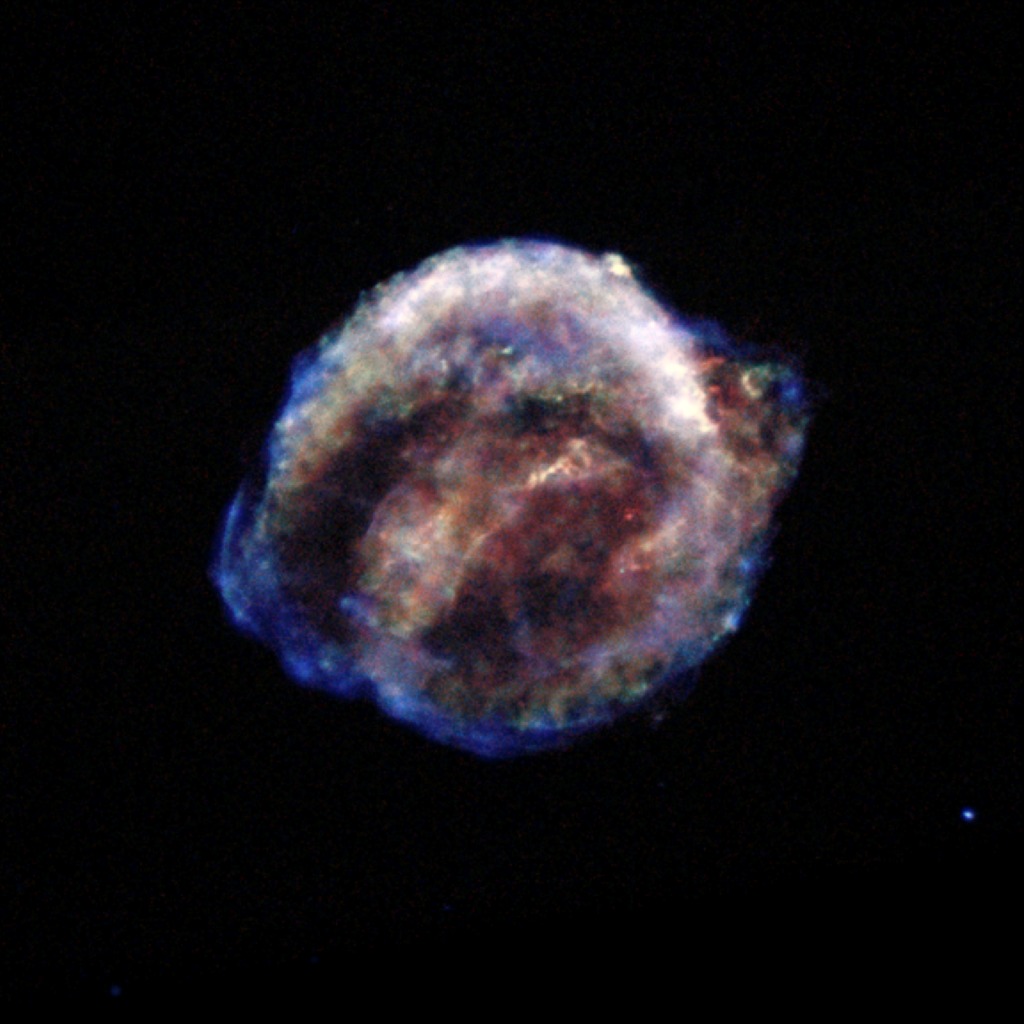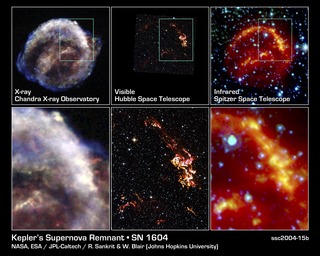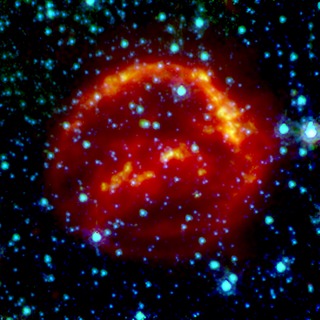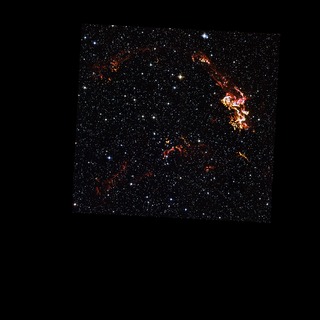
Credit: NASA/ESA/R. Sankrit and W. Blair (Johns Hopkins University)
Observation • October 6th, 2004 • ssc2004-15b3
ssc2004-15b3
This image from the Chandra X-ray Observatory shows the expanding remains of a supernova, called Kepler's supernova remnant, first seen 400 years ago by sky watchers, including famous astronomer Johannes Kepler. The supernova remnant is a fast-moving shell of iron-rich material from an exploded star, surrounded by an expanding shock wave that is sweeping up interstellar gas and dust. The image reveals a bubble-shaped shroud of gas and dust that is 14 light-years wide and is expanding at 4 million miles per hour (2,000 kilometers per second).
The Chandra X-ray data show regions of very hot gas, and extremely high-energy particles. The hottest gas (higher-energy X-rays, colored blue) is located primarily in the regions directly behind the shock front. These regions also show up in the Hubble observations, and also align with the faint rim of glowing material seen in the Spitzer data. The X-rays from the region on the lower left (colored blue) may be dominated by extremely high-energy electrons that were produced by the shock wave and are radiating at radio through X-ray wavelengths as they spiral in the intensified magnetic field behind the shock front. Cooler X-ray gas (lower-energy X-rays, colored green) resides in a thick interior shell and marks the location of heated material expelled from the exploded star.
Kepler's supernova, the last such object seen to explode in our Milky Way galaxy, resides about 13,000 light-years away in the constellation Ophiuchus.
The Chandra observations were taken in June 2000.
About the Object
- Name
- Kepler's Supernova Remnant • SN 1604
- Type
- Nebula > Type > Supernova Remnant
- Star > Evolutionary Stage > Supernova
- Distance
- 13,000 Light Years
Color Mapping
| Band | Wavelength | Telescope |
| X-ray | 5.0 keV | Chandra ACIS |
| X-ray | 1.5 keV | Chandra ACIS |
| X-ray | 0.7 keV | Chandra ACIS |
Astrometrics
- Position ()
- RA =17h 30m 42.0s
- Dec = -20° 31' 0.0"
- Field of View
- 0.0 x 0.0 arcminutes
- Orientation
- North is up







